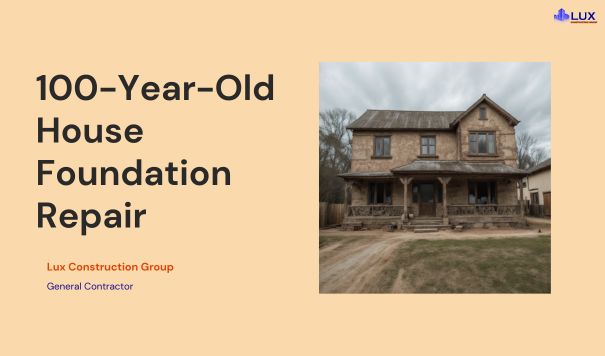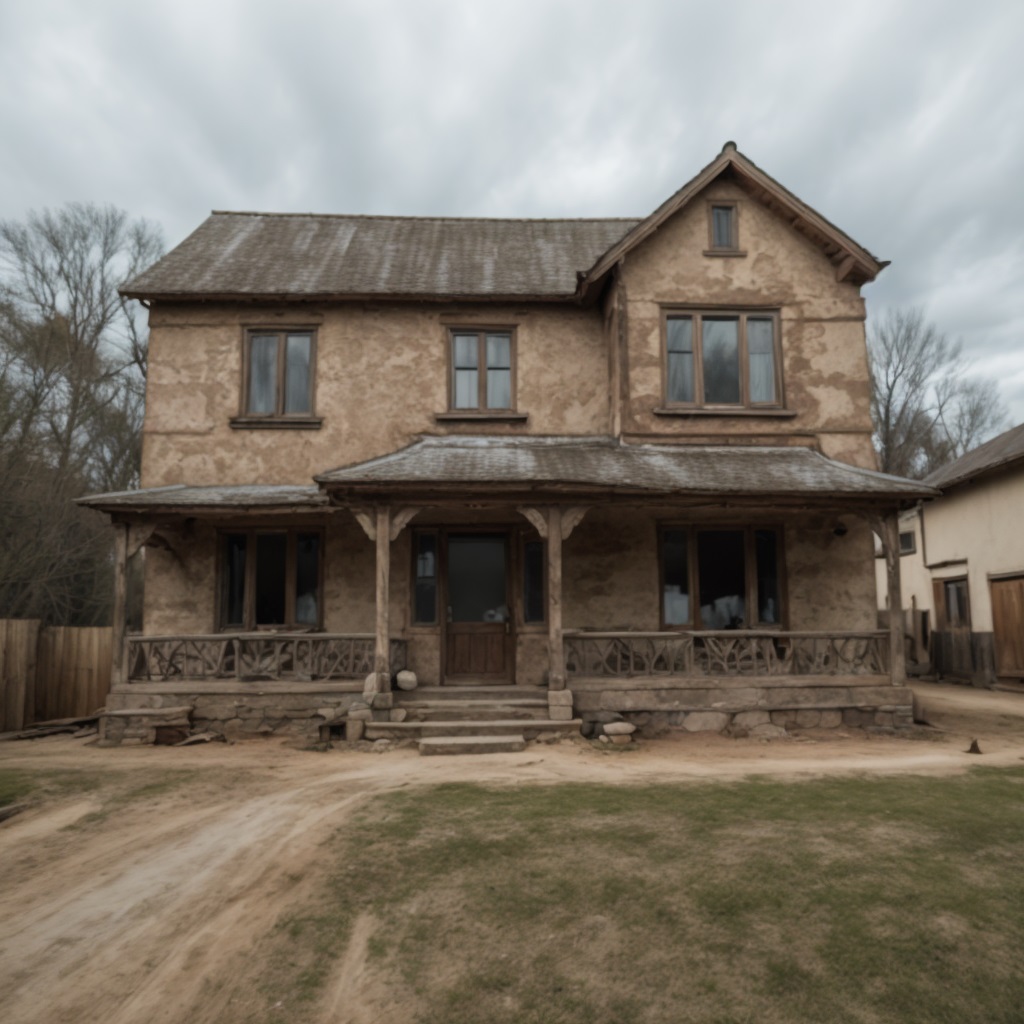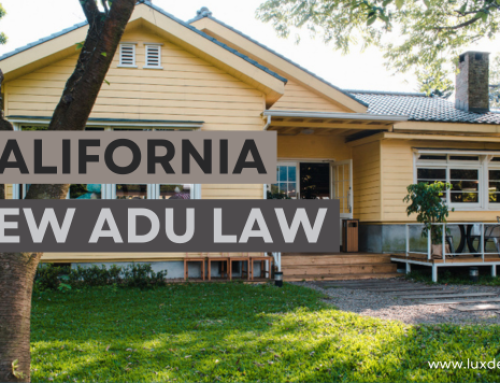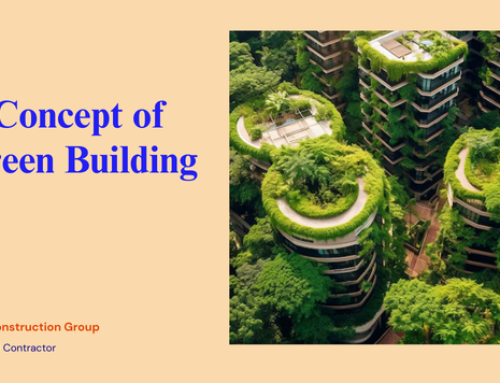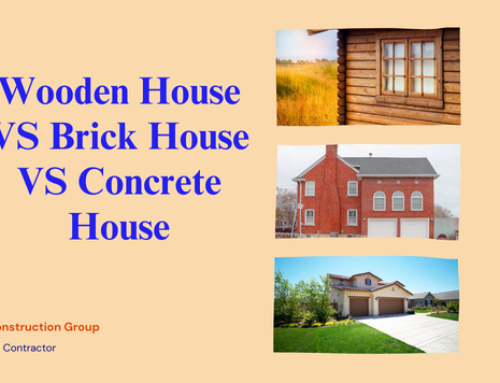Owning a century-old house in the vibrant city of Los Angeles comes with a unique sense of pride and responsibility. These historic homes, with their timeless architecture and storied pasts, form an integral part of our urban tapestry. However, maintaining such structures, particularly their foundations, is crucial for their longevity and safety. The LUX Construction Group, a seasoned contractor in the Los Angeles construction scene, understands the complexities of these breathing premises of history.
The foundation of any house is its bedrock, figuratively and literally. But when it comes to homes that have stood the test of time for 100 years or more, the foundation becomes a subject of special concern. Over the decades, foundations can suffer from a range of issues, including settling, cracking, water damage, and seismic activities. These problems not only pose a risk to the structural integrity of the house but also affect its value and safety.
In this blog post, we take a closer look at the foundation repair for historic homes. We’ll explore every section and provide a comprehensive guide on preserving the foundation integrity of Los Angeles’s historic dwellings.
Contents
- Common Problems With Historic Homes
- How to Assess the Condition of An Old Foundation
- Initial Visual Inspection
- Historical Analysis
- Advanced Diagnostic Tools
- Consultation With Structural Engineers
- Prepare a Detailed Report
- How Construction Companies Help With The Repairs
- Reinforced Concrete Piers
- Steel Mini Piers
- Helical Piers
- Pressure and Mud Grouting
- Compaction Grouting
- Specialized Grouting Techniques
- Enlarged Footing for Masonry or Concrete Stem Walls
- Stabilize Stone Foundation Walls
- Complete Foundation Replacement
- Preventative Measures and Maintenance Tips to Consider in LA For Repairing Old Foundations
- How Construction Has Changed Now Compared to Historic Homes
- Concrete Pressure Requirements Then and Now
- Evolving Knowledge of Soil Compaction
- Who You Can Call!
Common Problems With Historic Homes
The foundations of 100-year-old houses in Los Angeles are not just mere structures; they are historical legacies embedded in the city’s landscape. However, with age, these foundations often face unique challenges that require special attention. Unlike newer constructions, old foundations were built using different materials and techniques, some of which might not meet today’s standards.
In Los Angeles, the range of foundation problems in historic homes varies widely, reflecting the city’s diverse architectural history. Unlike San Diego, where homes often feature brick-and-mortar footings or boulders, Los Angeles’s historic houses present a different set of challenges, especially considering their varied foundation types.
Historically, many homes in Los Angeles were built with raised foundations – a style where the structure is elevated above ground level. This approach was more economical in earlier times before the widespread affordability of concrete in the later 20th century led to the popularity of slab-on-grade homes. The shift in construction practices over the years has resulted in a diverse array of foundation types within the city.
When it comes to identifying the need for foundation repair, whether in modern or historic homes, the symptoms tend to be consistent. However, the extent of foundation settlement and damage can vary significantly. Importantly, the overall condition of the structure is the key indicator. Typically, older homes in Los Angeles, having withstood decades of environmental and seismic activity, are more prone to displaying signs of foundation distress.
Common Signs and Symptoms of Foundation Issues:
- Drywall, Stucco, and Concrete Slab Cracks: These are often the most visible indicators of foundation issues.
- Ceiling and Tile Cracks: Reflective of internal structural movement.
- Chimney Issues: Cracks or a leaning chimney can signal foundational shifts.
- Sloping Floors: A telltale sign of settling or shifting foundations.
- Doors and Windows Issues: Difficulty in opening and closing can indicate foundation movement.
- Water Leaks: Often associated with foundation cracks and gaps.
When a house’s foundation settles, you often see several problems at the same time. Older homes, especially in Los Angeles, usually have more of these issues.
Think of it like comparing adults to kids: adults have had more time to go through life’s ups and downs, just like older houses have had more time to develop structural problems.
This doesn’t imply newer homes are immune to foundation problems, but the likelihood and complexity of issues tend to escalate with age.
How to Assess the Condition of An Old Foundation
When it comes to evaluating the foundation of a century-old home, a thorough and careful approach is essential. Accurate assessment is the cornerstone of effective repair, ensuring that any interventions are both appropriate and effective.
Here’s how professionals, like those at LUX Construction Group, approach this critical task:
-
Initial Visual Inspection
The first step is a comprehensive visual inspection. Experienced contractors look for obvious signs of distress such as cracks in the foundation walls, uneven flooring, doors or windows that stick or won’t close properly, and visible sagging or bowing of the structure.
These signs can indicate underlying issues that need closer examination.
-
Historical Analysis
Understanding the history of the building plays a crucial role. This involves researching the construction methods and materials used at the time the house was built.
In Los Angeles, this might include specific styles or techniques prevalent during the early 20th century. This knowledge helps in anticipating the types of issues that might be present.
-
Advanced Diagnostic Tools
For a more detailed analysis, professionals employ advanced diagnostic tools. These might include ground-penetrating radar (GPR) to assess soil conditions, laser scanning for precise measurements of deformation, and moisture meters to detect water damage. Such tools help in identifying problems that aren’t immediately visible.
-
Consultation With Structural Engineers
In some cases, especially where significant structural issues are suspected, a structural engineer’s expertise is sought. They can provide a more in-depth analysis of the foundation’s condition and recommend appropriate repair methods.
-
Prepare a Detailed Report
Post-assessment, a detailed report is prepared, outlining the findings and suggesting a plan of action. This report is crucial for homeowners and contractors to make informed decisions about the necessary repairs.
This thorough assessment process is vital to ensure that any intervention on a historic foundation is both respectful of its heritage and structurally sound. As we move towards preserving these architectural treasures, a well-thought-out assessment strategy is the key to success.
How Construction Companies Help With The Repairs
Dealing with foundation issues in an older home can be daunting. These issues range from minor cracks to serious water damage, and even structural settling and displacement. They can stem from a variety of causes like poor soil conditions or outdated design and engineering.
It’s crucial to understand that while foundation problems pose a significant threat to your home’s structural integrity, they generally develop over time, allowing for timely intervention before a major failure occurs.
However, repairing these issues goes beyond the skill set of most homeowners. It requires the expertise of structural and soil engineers, along with specialized contractors. They typically require the expertise of structural and soil engineers, along with specialized contractors, to ensure safe and effective resolution.
Professional construction companies employ various sophisticated techniques for repairing and stabilizing foundations:
-
Reinforced Concrete Piers
This involves installing reinforced concrete piers near the affected foundation area, which, after a 28-day curing period, are used to elevate and redistribute the load of the settled foundation section.
Multiple piers might be necessary depending on the extent of the settling.
-
Steel Mini Piers
These are small, yet robust, steel piers, inserted adjacent to the foundation footing and driven deep into the ground, often reaching bedrock depths of 15 to 25 feet. They provide stability and can be used for lifting settled slabs.
This method is cost-effective and durable, provided the bearing layer is not deeper than 60 feet.
-
Helical Piers
A patented system that uses a steel shaft with a helical plate, screwed into stable soil layers.
The resistance created by the plate’s rotation is sufficient to stabilize or elevate the foundation. This method requires specialized training and certification.
-
Pressure and Mud Grouting
This technique involves injecting a cement, water, and sand mixture under pressure into the soil.
It’s used for slab elevation or foundation stabilization but can be unpredictable and, if unsuccessful, may lead to slab cracking or unintended soil migration.
-
Compaction Grouting
Ideal for homes built on loose soils, this method uses low-slump mortar grout, injected to compact the soil, fill voids, and stabilize the foundation.
However, it’s generally too costly for most residential projects.
-
Specialized Grouting Techniques
These include jet, chemical, urethane, and vibro-compaction grouting, as well as potassium, lime, and water mixtures. Although effective, the cost often makes them impractical for residential restorations.
-
Enlarged Footing for Masonry or Concrete Stem Walls
Used for localized foundation settlement, this technique enlarges the footing to redistribute the house’s weight. It necessitates lifting the house, excavating a section of the footing, and filling it with reinforced concrete, with precise calculations required to ensure effectiveness.
-
Stabilize Stone Foundation Walls
For stone foundation walls, particularly those without mortar, stabilization involves excavating one side of the wall, constructing plywood forms, and pouring concrete between the form and wall. This strengthens the wall and provides a waterproofing surface.
-
Complete Foundation Replacement
The most extreme and expensive option is reserved for severely damaged foundations. It involves supporting the house with beams and jacks while the entire foundation is replaced.
This method often requires extensive additional repairs and should only be done by experienced specialty contractors.
Professional construction companies, with their expertise and specialized techniques, play a crucial role in safely restoring and preserving the integrity of old homes’ foundations. These methods, while varied, all aim to ensure the longevity and safety of your cherished historic home.
Preventative Measures and Maintenance Tips to Consider in LA For Repairing Old Foundations
In Los Angeles, where historic homes grace many neighborhoods, taking preventive measures and maintaining the foundations of these century-old structures is essential.
Not only do these steps help in preserving the architectural integrity of the homes, but they also play a significant role in avoiding costly repairs in the future.
Here are some key strategies homeowners and contractors should consider:
- Regular Inspections: Regularly scheduled inspections are vital. It’s recommended to have a professional inspect the foundation at least once a year. These inspections can catch minor issues before they escalate into major problems.
- Maintain Proper Drainage: Water is a foundation’s worst enemy, especially in older homes. Ensure that the drainage around your home is effective in directing water away from the foundation. This includes maintaining gutters, and downspouts, and ensuring that the landscape slopes away from the house.
- Control Soil Moisture Levels: Inconsistent soil moisture levels can lead to foundation movement. This is particularly crucial in Los Angeles, where the climate can vary. Use techniques like proper landscaping and irrigation to maintain consistent soil moisture.
- Repair Cracks Promptly: Small cracks can quickly become large problems. If you notice cracks in your foundation, it’s important to have them assessed and repaired as soon as possible to prevent further damage.
- Reinforce Foundation When Necessary: In some cases, reinforcing the foundation with modern materials can add to its strength and longevity. This might involve underpinning, the use of piers, or other structural supports.
- Beware of Tree Roots: Large trees can be beautiful but their roots can be damaging to old foundations. Regularly check for root growth near your foundation and consult with an arborist if necessary.
- Stay Informed About Local Regulations: In Los Angeles, there are specific regulations regarding historic buildings. Always stay informed and comply with these regulations, especially when undertaking major repairs.
- Plan for Earthquake Safety: Given LA’s seismic activity, consider retrofitting your historic home for earthquake safety. This can include foundation bolting and other seismic retrofit techniques.
Following these tips can help ensure the stability and longevity of your historic home’s foundation, preserving its charm and character for generations to come. Remember, the key to successful maintenance lies in a proactive approach and the use of both traditional and modern techniques in harmony.
How Construction Has Changed Now Compared to Historic Homes
While contrasting modern techniques with those used in historic homes, two aspects stand out prominently: concrete pressure requirements and soil compaction rates.
-
Concrete Pressure Requirements Then and Now
Historically, the approach to laying concrete was notably straightforward. The process typically involved pouring the concrete and allowing it to set without additional pressure.
Today, however, the standards have significantly advanced. Modern construction demands that concrete be pressurized to approximately 35 psi. This enhancement in pressure ensures a denser and stronger concrete foundation, a crucial element in the longevity and safety of buildings.
-
Evolving Knowledge of Soil Compaction
Similarly, our understanding of soil compaction has undergone a remarkable transformation. In earlier times, the compaction rates of the soil used for foundations were not a major concern, often leading to less dense soils. This lower density could contribute to greater foundation settlement over time, posing risks to the structural integrity of the building.
Nowadays, the construction industry adheres to a much higher standard, with compaction rates around 95%. This increased compaction rate fortifies the foundation against settling, ensuring a more stable and durable structure.
This ongoing learning process about soil compaction highlights the dynamic nature of construction knowledge and practices. As our understanding deepens, so does our ability to create buildings that stand the test of time.
Who You Can Call!
Residing in a historic or modern home in Los Angeles? Reach out to LUX Construction Group for unparalleled expertise in maintaining the integrity of your beloved residence. We are specializes in a comprehensive range of construction services, including residential and commercial buildings, Accessory Dwelling Units (ADUs), and Junior ADUs. We understand the unique demands of Los Angeles properties, from charming historic homes to contemporary structures.
Upon contacting us, our team will meticulously inspect every aspect of your home’s foundation, whether it’s a basement, slab, crawl space, or any other type. We recognize the importance of a solid foundation for both your home’s safety and its aesthetic appeal.
So, don’t delay the care that your home needs. Contact LUX Construction Group today and take the first step towards ensuring the longevity and beauty of your home.
Key Takeaways:
- Specialized Care for Historic Foundations: Century-old Los Angeles homes need expert attention due to unique foundation challenges.
- Importance of Professional Assessment: Accurate assessment by experts like LUX Construction Group is essential for effective foundation repair.
- Combining Modern Techniques with Historic Integrity: Utilizing modern repair methods helps preserve the historical value of old homes.
- Adherence to Regulations: Following Los Angeles’s building codes and safety standards is crucial during repairs.
- Proactive Maintenance: Regular maintenance extends the life and stability of historic foundations.
- Expertise of LUX Construction Group: Specialized in historic homes in Los Angeles, offering tailored repair solutions.

